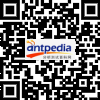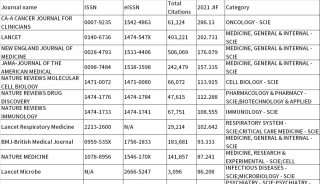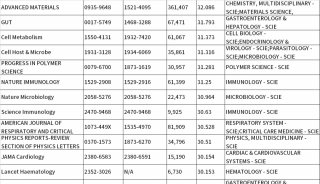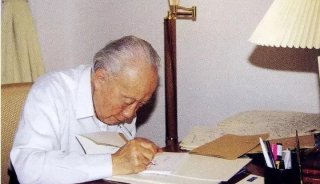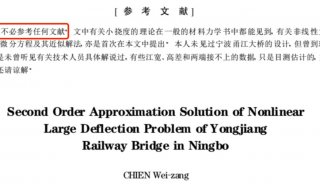表界面科学最新文献-KSV NIMA
1. Name:Tuning structure and properties of ultra-low cross-linked temperature-sensitive microgels at interfaces via the adsorption pathways
Authors:Marie Friederike Schulte, Andrea Scotti, Monia Brugnoni, Steffen Bochenek, Ahmed Mourran and Walter Richtering
Journal:Langmuir
DOI: 10.1021/acs.langmuir.9b02478
Abstract:The structure of poly-N-isopropylacrylamide (PNIPAM) microgels adsorbed to a solid substrate is investigated in the dry and hydrated state by means of atomic force microscopy (AFM). We compare two different systems: a regularly cross-linked microgel containing 5 mol% cross-linker and ultra-low cross-linked microgels (ULC) prepared without dedicated cross-linker. Furthermore, we compare three different adsorption processes: (i) in-situ adsorption from solution, (ii) spin-coating and (iii) Langmuir-Blodgett deposition from an oil-water interface. The results demonstrate that the morphology and the temperature-induced collapse of microgels adsorbed to a solid substrate is very different for ultra-low cross-linked microgels as compared to regularly cross-linked microgels, despite the fact that their general behavior in solution is very similar. Furthermore, the morphology of (ULC) microgels can be controlled by the adsorption pathway to the substrate. Absorbed ULC microgels are strongly deformed when being prepared either by spin-coating or by Langmuir-Blodgett deposition from an oil-water interface. After rehydration, the ULC microgels cannot collapse as entire objects instead small globules are formed. Such a strong deformation can be avoided by in-situ adsorption to the substrate. Then, the ULC microgels exhibit half-ellipsoidal shapes with a smooth surface in the collapsed state similar to the more cross-linked microgels. As ULC microgels can be selectively trapped either in a more particle-like or in a more polymer-like behavior, coatings with strongly different topographies and properties can be prepared by one and the same ultra-low cross-linked microgel. This provides new opportunities for the development of smart polymeric coatings.
Link:https://pubs.acs.org/doi/10.1021/acs.langmuir.9b02478
2. Name:Layer-by-Layer Assembly of Clay–Carbon Nanotube Hybrid Superstructures
Authors:Nikolaos Chalmpes, Antonios Kouloumpis, Panagiota Zygouri, Niki Karouta, Konstantinos Spyrou, Panagiota Stathi, Theodoros Tsoufis, Vasilios Georgakilas, Dimitrios Gournis and Petra Rudolf
Journal:ACS Omega
DOI: 10.1021/acsomega.9b01970
Abstract:Much of the research effort concerning layered materials is directed toward their use as building blocks for the development of hybrid nanostructures with well-defined dimensions and behavior. Here, we report the fabrication through layer-by-layer deposition and intercalation chemistry of a new type of clay-based hybrid film, where functionalized carbon nanotubes are sandwiched between nanometer-sized smectite clay platelets. Single-walled carbon nanotubes (SWCNTs) were covalently functionalized in a single step with phenol groups, via 1,3-dipolar cycloaddition, to allow for stable dispersion in polar solvents. For the production of hybrid thin films, a bottom-up approach combining self-assembly with Langmuir–Schaefer deposition was applied. Smectite clay nanoplatelets act as a structure-directing interface and reaction media for grafting functionalized carbon nanotubes in a bidimensional array, allowing for a controllable layer-by-layer growth at a nanoscale. Hybrid clay/SWCNT multilayer films deposited on various substrates were characterized by X-ray reflectivity, Raman, and X-ray photoelectron spectroscopies, as well as atomic force microscopy.
Link:https://pubs.acs.org/doi/10.1021/acsomega.9b01970
3. Name:The influence of charge and lipophilicity of daunorubicin and idarubicin on their penetration of model biological membranes – Langmuir monolayer and electrochemical studies
Authors:Dorota Matyszewska
Journal:Biochimica et Biophysica Acta (BBA) - Biomembranes
DOI: 10.1016/j.bbamem.2019.183104
Abstract:The interactions of two selected anthracyclines, daunorubicin (DNR) and idarubicin (IDA), with phospholipid monolayers used as simple models of cell membranes, were investigated. The results of Langmuir experiments together with Brewster angle microscopy showed that both drugs strongly affect cancer cell membranes composed of 1,2-dimyristoyl-sn-glycero-3-phospho-l-serine (DMPS). Electrostatic interactions allow positively charged DNR and IDA to interact with negatively charged DMPS polar heads but increased lipophilicity of IDA allows it to penetrate the layer more effectively than DNR and prevents from its expulsion at higher surface pressures. The analysis of the thermodynamical functions of hysteresis proves the presence of the enthalpically favorable interactions within the monolayer during its compression in the presence of idarubicin, which may form aggregates with DMPS molecules. The influence of the drugs was significantly less pronounced for a healthy cell model composed of 1,2-dimyristoyl-sn-glycero-3-phosphocholine (DMPC) due to the lack of strong electrostatic attractions. The interactions of drugs with pre-compressed phospholipid monolayers were also examined. The physical state of the monolayer and its packing determined only to some extent the penetration of anthracyclines. Since drug molecules first approach the polar region of the monolayer, the increase in surface pressure in time was more pronounced for negatively charged DMPS monolayers than for zwitterionic DMPC. Additionally, idarubicin was able to penetrate the precompressed DMPS monolayers more effectively than daunorubicin due to increased lipophilicity. This property of the drug was also responsible for IDA better penetration of hydrocarbon chains of supported DMPS monolayers compared to DNR, as shown by electrochemical studies.
Link:https://www.sciencedirect.com/science/article/pii/S0005273619302500
4. Name:Orientation control of KNbO3 film grown on glass substrates by Ca2Nb3O10− nanosheets seed layer
Authors: F.Baudouin, V.Demange, S.Ollivier, L.Rault, A.S.Brito, A.S.Maia, F.Gouttefangeas, V.Bouquet, S.Députier, B.Bérini, A.Fouchet and M.Guilloux-Viry
Journal:Thin Solid Filmsr
DOI: 10.1016/j.tsf.2019.137682
Abstract:KNbO3 films have been deposited by pulsed laser deposition on glass substrates covered by Ca2Nb3O10− nanosheets used as seed layer, for the purpose of promoting (001) preferential orientation. Nanosheets have been prepared by the exfoliation process of HCa2Nb3O10 phase that is obtained by cation exchange of the Dion-Jacobson KCa2Nb3O10 phase in an acidic solution. Electron diffraction in transmission electron microscopy performed on KCa2Nb3O10 and HCa2Nb3O10 powders, and on Ca2Nb3O10− nanosheets revealed formation of local superstructures that are not detected by X-ray diffraction due to the weakness of superstructure reflection intensities. Nanosheets were deposited on substrates using the Langmuir-Blodgett method. A smooth covering of the surface was shown by atomic force microscopy. 200 nm thick KNbO3 films have been grown by pulsed laser deposition on Ca2Nb3O10−-NS/glass and on (001)SrTiO3 substrates for comparison. Substrates covered with nanosheets induced highly textured (001)-oriented thin film, which possesses a similar microstructure as epitaxial film on single crystalline strontium titanate substrate.
Link:https://www.sciencedirect.com/science/article/pii/S0040609019307096
5. Name:Incorporation of cyclodiene pesticides and their polar metabolites to model membranes of soil bacteria
Authors:Aneta Wójcik, Paulina Perczyk, Paweł Wydro and Marcin Broniatowski
Journal:Journal of Molecular Liquids
DOI: 10.1016/j.molliq.2019.112019
Abstract:The world-wide application of cyclodiene pesticides (CP) lead to severe pollution of arable land and because of the long half-lives they will be for many decades present in the soil. The only reasonable way of the elimination of these chemicals from the soil is bioremediation – the introduction to the soil of decomposer microorganisms strains capable of CP degradation. CP are highly hydrophobic and exhibit large membrane activity; thus, they can be incorporated to the cellular membrane and retained therein. The presence of CP and their metabolites in the cellular membrane of the decomposer organism can lead to severe alterations of its function and in consequence to the death of the decomposer cell. Microorganisms protect themselves changing the phospholipid composition of their membranes. To shed light on the correlation between the membrane composition and its interactions with CP and their metabolites we applied Langmuir monolayers as versatile models of decomposers’ membranes. By the proper selection of phospholipids we prepared different models of cellular membranes of Gram-negative and Gram-positive bacteria. The model membranes were doped by four most frequently applied CP and their common metabolite. The combined application of microscopic, diffractometric and spectroscopic methods proved that CP can be incorporated into the model membranes and that the membrane activity of endosulfan is comparable with endrin – one of the most toxic pesticides. The penetration tests and spectroscopic studies proved also the possibility of the uptake of the polar CP metabolites by the model membranes from the aqueous subphase.
Link:https://www.sciencedirect.com/science/article/pii/S0167732219351372
6. Name:Nonlinear interfacial rheology and atomic force microscopy of air-water interfaces stabilized by whey protein beads and their constituents
Authors:Jack Yang, Ilonka Thielen, Claire C.Berton-Carabin, Erikvan der Linden and Leonard M.C.Sagis
Journal:Food Hydrocolloids
DOI: 10.1016/j.foodhyd.2019.105466
Abstract:In recent years, food-grade Pickering particles have gained considerable interest, because of their ability to form stable emulsions and foams. Such Pickering stabilizers are often produced by aggregation of proteins, which typically results in a mixture of cross-linked particles and unbound proteins (smaller constituents). This study focuses on the possible contribution to the interfacial behaviour of these smaller constituents in whey protein isolate (WPI) bead suspensions, which are produced by cold-gelation of WPI aggregates. To understand the interfacial properties of the total mixture, we have studied the involved structures and interactions hierarchically, from native WPI, to aggregates, and finally gel beads.
Link:https://www.sciencedirect.com/science/article/pii/S0268005X19309269
7. Name:L-ascorbic acid alkyl esters action on stratum corneum model membranes: an insight into the mechanism for enhanced skin permeation
Authors: Yenisleidyde las Mercedes Zulueta Díaz, Karen Menghi, Maria Laura Guerrero, Natalia Nocelli and María Laura Fanani
Journal:Colloids and Surfaces B: Biointerfaces
DOI: 10.1016/j.colsurfb.2019.110621
Abstract:L-ascorbic acid alkyl esters (ASCn) are lipophilic forms of vitamin C, which act as skin permeation enhancers. We investigated the physical changes induced by incorporating ASCn into stratum corneum (SC) lipid membranes and correlated this with the mechanism proposed in the literature for skin permeation enhancement phenomena. We used lipid monolayers to explore the 2D structure and elasticity of the lipid-enhancer systems. As a comparison, the classic permeation enhancer, oleic acid (OA) and the non-enhancer analogue stearic acid (SA) were analysed. The incorporation of ASCn or OA into SC membranes resulted in more liquid-like films, with a dose-dependent lowering of the compressibility modulus. Brewster angle microscopy (BAM) evidenced partial miscibility of the enhancer with SC lipid components, stabilising the liquid-expanded phase. At the nanoscale, AFM showed that SC lipids form heterogeneous membranes, which underwent structural alterations after incorporating ASCn and fatty acids, such as SA and OA. The lower, cholesterol-enriched phase appears to concentrate the enhancers, whilst the higher ceramide-enriched phase concentrated the non-enhancer SA. Our results and previously reported pieces of evidence indicate a strong pattern in which the rheological properties of SC lipid films are determinant for skin permeation phenomena.
Link:https://www.sciencedirect.com/science/article/pii/S0927776519307659
8. Name:Ultrathin films of porous metal‐organic polyhedra for gas separation
Authors:Miguel Ángel Andrés, Arnau Carné-Sánchez, Javier Sánchez-Laínez, Olivier Roubeau, Joaquin Coronas, Daniel Maspoch and Ignacio Gascon
Journal:Chemistry – A European Journal
DOI: 10.1002/chem.201904141
Abstract:Ultrathin films of a robust Rh(II)‐based porous metal‐organic polyhedra (MOP) have been obtained. Homogeneous and compact monolayer films ( ca. 2.5 nm thick) were first formed at the air‐water interface, deposited onto different substrates and characterized using spectroscopic methods, scanning transmission electron microscopy and atomic force microscopy. As a proof of concept, the gas separation performance of MOP supported membranes has been also evaluated. Selective MOP ultrathin films (thickness ca. 60 nm) exhibit remarkable CO 2 permeance and CO 2 /N 2 selectivity, demonstrating the great combined potential of MOP and Langmuir‐based techniques in separation technologies.
Link:https://onlinelibrary.wiley.com/doi/10.1002/chem.201904141
9. Name:The method of depositing CeO2 nanoparticles onto a DPPC monolayer affects surface tension behaviour
Authors:Maria Miguel Diez, Alison Buckley, Teresa D.Tetley and Rachel Smith
Journal:NanoImpact
DOI: 10.1016/j.impact.2019.100186
Abstract:Studies using Langmuir-Wilhelmy balance (LWB) systems have demonstrated that engineered nanoparticles (NPs) can disrupt the surface tension behaviour of model lung surfactants. However, the majority of such studies used approaches that do not accurately mimic in vivo deposition at the air-liquid interface of inhaled particles – using instead NP suspensions. The present study investigated for the first time the effect of the mode of delivery of NPs to the interface on the compression surface pressure (Π) – mean molecular area (Mma) isotherms of surfactant monolayers, using an LWB. A novel system to deposit a well characterised aerosol of cerium oxide nanoparticles (CeO2NPs) on a dipalmitoylphosphatidylcholine (DPPC) monolayer was developed. The effects of depositing CeO2NPs from an aerosol were compared with two alternative approaches used in the literature: CeO2NPs suspended in chloroform and deposited on a DPPC monolayer and mixtures of CeO2NPs and DPPC in chloroform deposited directly on the subphase. Experiments were undertaken using a physiologically relevant subphase and temperature, 37 °C, with additional experiments at 21 °C. In each case Langmuir-Blodgett films were imaged using scanning electron microscopy and the distribution of cerium mapped using time of flight – secondary ion mass spectrometry. The results clearly demonstrate that mode of delivery has a differential effect on surface tension behaviour and that caution should be exercised in the use of solvent deposition techniques because of effects on NP agglomeration state and the pattern of distribution of NP agglomerates, which may not accurately reflect the behaviour in vivo of inhaled particles. The study findings therefore suggest that aerosol deposition techniques are to be preferred, however, there are issues that need to be investigated further, including the effect of control air exposures, and also a need to explore the effects of cycling and the use of more complete lung surfactant models, before such a recommendation can be confirmed.
Link:https://www.sciencedirect.com/science/article/pii/S2452074819300953
10. Name:Bacteriocin enterocin CRL35 is a modular peptide that induces non-bilayer states in bacterial model membranes
Authors:Carolina Medina Amado, Carlos J.Minahk, Eduardo Cilli, Rafael G.Oliveira and Fernando G.Dupuy
Journal:Biochimica et Biophysica Acta (BBA) - Biomembranes
DOI: 10.1016/j.bbamem.2019.183135
Abstract:The mechanism of action of the anti-Listeria peptide enterocin CRL35 was studied with biophysical tools by using lipid mixtures that mimicked Gram-positive plasma membranes. Langmuir monolayers and infrared spectroscopy indicated that the peptide readily interacted with phospholipid assembled in monolayers and bilayers to produce a dual effect, depending on the acyl chains. Indeed, short chain mixtures were disordered by enterocin CRL35, but the gel-phases of membranes composed by longer acyl chains were clearly stabilized by the bacteriocin. Structural and functional studies indicated that non-bilayer states were formed when liposomes were co-incubated with enterocin CRL35, whereas significant permeabilization could be detected when bilayer and non-bilayer states co-existed. Results can be explained by a two-step model in which the N-terminal of the peptide firstly docks enterocin CRL35 on the lipid surface by means of electrostatic interactions; then, C-terminal triggers membrane perturbation by insertion of hydrophobic α-helix.
Link:https://www.sciencedirect.com/science/article/pii/S0005273619302834
11. Name:Oriented layered assemblies of graphene nanosheets/Fe3O4 nanoparticles as a superior anode material for lithium ion batteries
Authors:Hee-Sung Jeong, Hyungsub Kim, Kyoung-Il Jo, Jiwon Jang, Jae-Hak Choi and Jaseung Koo
Journal:Applied Surface Science
DOI: 10.1016/j.apsusc.2019.1444161
Abstract:The development of more effective electrodes for lithium ion batteries requires increasing the specific surface area and improving the reversible capacity of the materials. We prepared a hybrid multilayer film consisting of graphene oxide (GO) nanosheets and iron oxide (Fe3O4) nanoparticles assembled using the Langmuir-Schaefer (LS) technique. The GO-Fe3O4 hybrid monolayer is formed by ligand exchange between GO suspended in the subphase and oleic acid-coated Fe3O4 nanoparticles dispersed at the liquid-gas interface. Transmission electron microscopy (TEM) and grazing incidence small angle X-ray scattering (GISAXS) results indicate that the GO-Fe3O4 composite monolayer at the interface possesses closely packed hexagonal structure of the Fe3O4 nanoparticles with high coverage upon monolayer compression. The multilayer GO-Fe3O4 hybrid materials were prepared by repeated LS deposition, exhibiting high reversible capacity (~600 mAh g−1) and superior cycle stability over 1000 cycles.
Link:https://www.sciencedirect.com/science/article/pii/S0169433219332325
12. Name:The role of phospholipid composition and ergosterol presence in the adaptation of fungal membranes to harsh environmental conditions–membrane modeling study
Authors:Paulina Perczyk, Aneta Wójcik, Paweł Wydro and Marcin Broniatowski
Journal:Biochimica et Biophysica Acta (BBA) - Biomembranes
DOI: 10.1016/j.bbamem.2019.183136
Abstract:Soil fungi play an important role in the environment decomposing dead organic matter and degrading persistent organic pollutants (POP). The presence of hydrophobic POP in the soil and membrane-lytic substances excreted by competing microorganism to the soil solution is the constant threat to these organisms. To survive in the harsh environment and counteract these hazards the fungal cells have to strictly control the composition of the lipids in their cellular membranes. However, in the case of fungal membranes the correlation between their composition and physical properties is not fully understood. In our studies we applied Langmuir monolayers formed by phospholipids typical to fungal membranes and ergosterol as versatile model membranes. These membranes were characterized by the Langmuir technique, Brewster Angle Microscopy and Grazing Incidence X-ray Diffraction, as well as were exposed to the action of phospholipase A2 treated as a model membrane-lytic protein. We started our studies from the equimolar mixture of phosphatidylethanolamine with phosphatidylcholine and doped this matrix with phosphatidylserine (PS) or phosphatidylinositol (PI). It turned out that the membranes with PS were much more condensed at the mesoscale and periodically organized at the molecular level. Starting from these models we derived two families of model fungal membranes adding to these phospholipid matrices ergosterol. It turned out that the level of ergosterol content is of crucial importance for the model membrane structure and its durability. Changing the ergosterol mole ratio from 0 to 0.5 we defined and described in detail four different 2D crystalline phases.
-
市场商机

-
焦点事件

-
焦点事件




